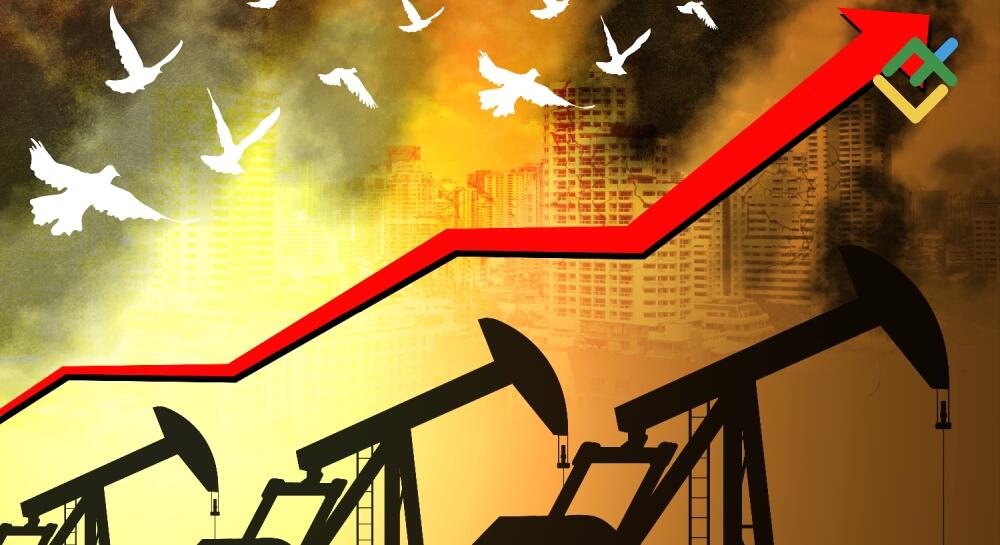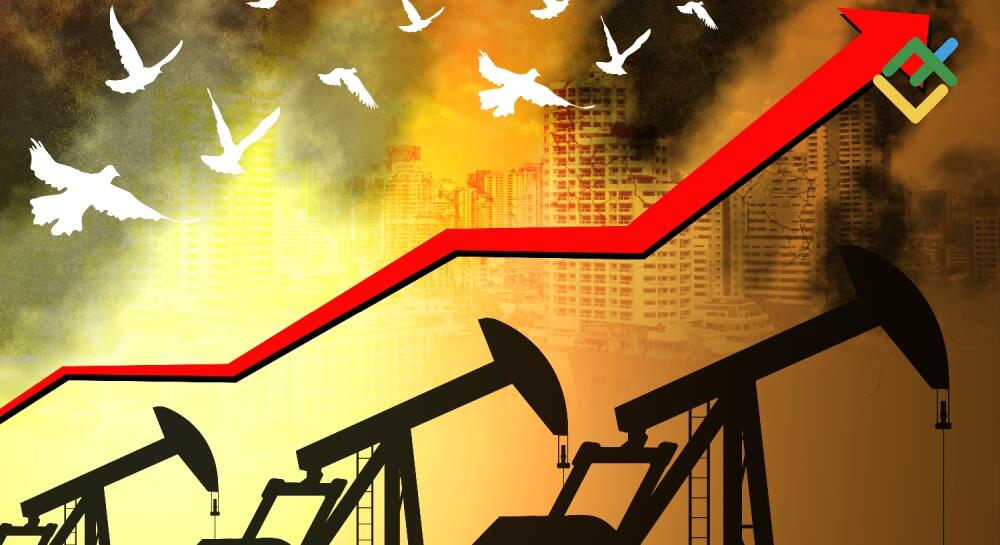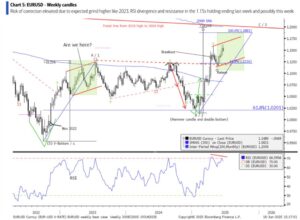Oil Prices Up as Iran-Israel Conflict Escalates. Forecast as of 17.06.2025

The recent escalation in the Israeli-Iranian conflict has led to a 7% increase in the Brent crude oil price. However, the oil market quickly stabilized. Investors assumed that the rapid de-escalation would repeat itself. Let’s discuss this topic and make a trading plan for Brent.
The article covers the following subjects:
Major Takeaways
- The oil market is optimistic that the conflict in the Middle East will soon come to an end.
- Iranian oil exports have fallen sharply.
- The level of $74.7 is a line in the sand for Brent.
Weekly Fundamental Forecast for Brent
The market discounts all factors. Adopting this principle would allow us to consider the conflict in the Middle East settled. The rise in risk appetite indicates that investors do not believe the situation will persist. The ratio of US stocks to bonds has reached its highest level since Donald Trump’s inauguration. Despite the US president’s calls to evacuate Tehran, the stock indices remain stable.
US Stocks to Bonds Ratio
Source: Bloomberg.
The recent 7% increase in Brent prices, triggered by the Israeli strike on Iranian nuclear facilities, was driven by concerns over the potential impact on global oil supplies. Iran is OPEC’s third-largest producer, as measured by output. In 2025, the country’s oil production reached 3.4 million bpd. China was the primary purchaser of these products. According to Kpler, exports fell from 1.7 million bpd to 102 million bpd after the start of the armed conflict. Concerns have been raised by a scenario in which Israel would bomb Kharg Island, a strategic location as it is the site of the Kharg oil terminal, which accounts for 90% of Iran’s oil exports.
Tehran’s threat to block the Strait of Hormuz was a particularly alarming development. Approximately 18–19 million bpd, accounting for one-fifth of global oil consumption, is transported through this vital conduit from the Middle East. As would be expected, demand for hedging against the potential risks associated with Brent growth reached its highest level since 2022.
Demand for Hedging Brent Crude Oil Price Increases
Source: Bloomberg.
What factors contributed to Brent’s subsequent decline following its initial surge? Investors have long recognized that while geopolitical risks may appear dramatic, their impact tends to be more subtle and insidious. They cited previous instances in which exchanges of hostilities between Israel and Iran rapidly concluded. In addition, Tehran is seeking opportunities to resume negotiations with the US regarding its nuclear program and is urging Israel to adopt a more tempered stance.
A key consideration is the US’s reluctance to allow oil prices to escalate, as this could spur inflation and trigger a recession. However, history shows that oil prices should double before the US economy enters a recession. Before the geopolitical conflict, concerns about global demand due to the global economic slowdown and OPEC+ production increases led to a downward trend in Brent prices.
At this time, the US has no intention to end the conflict. Israel has stated that the United States has not exerted pressure on it. Donald Trump did not endorse the G7 joint statement on achieving a diplomatic resolution to the conflict.
Weekly Trading Plan for Brent
If the conflict proves to be protracted, Brent will be in a position to develop a rally. The level of $74.7 acts as a line in the sand. If the price returns above this level, bulls will likely establish a sustainable rally, allowing investors to open long trades on Brent. Conversely, if bulls fail to do so, the Brent price will likely face a sell-off.
This forecast is based on the analysis of fundamental factors, including official statements from financial institutions and regulators, various geopolitical and economic developments, and statistical data. Historical market data are also considered.
Price chart of UKBRENT in real time mode
The content of this article reflects the author’s opinion and does not necessarily reflect the official position of LiteFinance broker. The material published on this page is provided for informational purposes only and should not be considered as the provision of investment advice for the purposes of Directive 2014/65/EU.
According to copyright law, this article is considered intellectual property, which includes a prohibition on copying and distributing it without consent.








